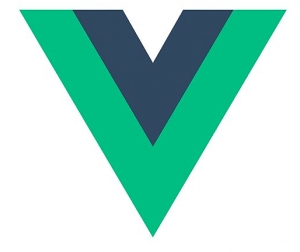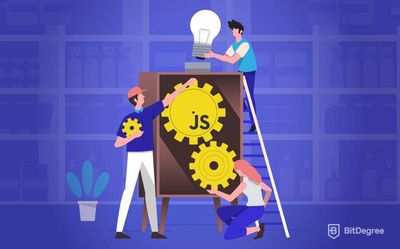Ace quick missions & earn crypto rewards while gaining real-world Web3 skills. Participate Now! 🔥
Every programming beginner will tell you what JavaScript frameworks are. To put it simply, they serve as a certain foundation for a developer to build their JavaScript code on. A framework may also contain an API, some libraries, or other functionalities. The hard part is, how do you choose one?
According to the statistics, React is currently the most common choice out of all JavaScript frameworks. However, this doesn't necessarily mean it will suit your needs best. Going through this extensive guide, you will get to know the most popular JavaScript frameworks and what each of them has to offer.
Table of Contents
Why do you need JavaScript frameworks

Take advantage of this special Udacity coupon code & access selected Udacity courses for free! Learn new skills & develop your career at zero cost.
Let's start with why would we need JavaScript frameworks in the first place. It's perfectly possible to code without using them – however, a well-chosen framework will make your work a lot easier. Furthermore, they are free and open-source, so there's no risk in trying, now is there?
First and foremost, it improves your efficiency. Think of it as a shortcut of sorts: you have to write less code manually, as there are functions and patterns already pre-written and ready for you to use. Some components of a website do not need to be custom-made, therefore, you can just pre-built ones and build on them. Without the need to work on basic yet time-consuming tasks, you can concentrate on building unique features and perfecting specific details.
The next advantage of JavaScript frameworks comes from its huge user base. Most of the time, you have extensive documentation, support groups, community blogs, and forums. Users are quick to test new updates and report bugs, which means the issues are detected and resolved without hassle.
React: the number one

The current leader of the JavaScript UI framework field is React. Facebook developers started working on it to simplify their own work at first. The application called Facebook Ads had been growing extremely fast, which meant complicated management and support. Therefore, the team started building a framework to help them with efficiency. They had an early prototype by 2011, and two years later, the framework was open-source and available to the public. It is currently used by a lot of business giants: AirBNB, PayPal, Netflix, etc.
React is based on reusable components. To put it simply, these are blocks of code that can be classified as either classes or functions. Each component represents a specific part of a page, like a logo, a button, or an input box. The parameters they take are called props, which stands for properties. You can call your components in a certain order, place one inside the other, and create the look you like.
Speaking of syntax, most developers agree that React is easy to learn if you already know JavaScript. There's extensive documentation to guide you, full of handy examples. If videos are more up your alley, you can also take a comprehensive online course on BitDegree.
Angular: supported by Google

The first steps towards what we call Angular today were taken in 2009. Multiple renamings and rewrites later, it sits strongly in the top three of the most popular JavaScript frameworks list. One of the reasons it's considered to be so reliable is the support of Google. It is also the JavaScript UI framework of choice for Google apps developers. Just like React, Angular has a component-based structure. You can manipulate, nest, and reuse them as you need.
To write an application on Angular, you will need to use TypeScript. Basically, it is a superset of JavaScript that uses the same syntax but also supports static typing and classes. The system of types is incredibly versatile as well: with TypeScript, you get access modifiers, enums, generics, hybrid types, and much more. After you're done, an ahead-of-time compiler compiles your code into clean JavaScript. This way, you can create a more robust project which will work in any OS and any host. This also means you can use Angular for both desktop and mobile applications.
To get the first taste of what's it like to work with Angular, you can try learning online with BitDegree – take a 5 hour introductory course or dive deeper with full 12 hours of study material.
Vue.js: light and flexible

As Evan You worked in Google, he used Angular for a few projects. While he liked the possibilities it gave him, the overall system seemed too heavy for the simple tasks at hand. Therefore, it's only natural that the first thing most developers notice when trying the Vue.js framework he created and released in 2014 is how incredibly lightweight it is. With a file of just around 20 kilobytes in size, you can download and start using Vue.js in literal seconds.
However, you shouldn't think small size equals strict limitations. You can extend the light structure with various tools and libraries, achieving truly impressive flexibility. Vue.js is also rather simple to learn: according to the team, all the background knowledge you need is JavaScript and HTML.
Another strength the Vue.js has lies in its official command-line interface (CLI). It is tooling baseline that speeds the development up by offering a ton on plugins, presets, instant prototyping, and an interactive project scaffolding tool. We must add that the graphical user interface improves the user experience even further.
Aurelia: viva la web standards

The Aurelia JS framework was created by Rob Eisenberg, who worked on Angular previously. Now, developers praise his creation for its stunning performance and speed of rendering. It also uses up less resources than most JavaScript frameworks. The thing is, Aurelia consists of function-oriented modules, such as plugins, routing, testing, dependency injection, and many more. You can use the Aurelia JS framework for developing web, mobile, and desktop applications. The modularity allows you to create apps of various sizes, too. Aurelia supports Babel and TypeScript. It is also fully compatible with future versions of JavaScript.
Out of the choices presented in this guide, Aurelia might be one of the youngest: we only got the 1.0 version in the midst of 2016. However, this gives it a slight edge: according to its creators, Aurelia offers a component model that complies best web standards best. Why? Because unlike some of the most popular JavaScript frameworks, it was created after those standards were finalized. Aurelia is also easily extensible, which means you can integrate it with other JavaScript frameworks or libraries, such as React or Bootstrap.
Ember: stability and convention

The work in the Ember framework started in 2011, and the version 1.0 was released two years later. Instead of one company backing the project, Ember has many supporters that are usually also users of the framework – e.g., LinkedIn and Yahoo. Its main goal is to simplify web design – however, you can also use it for mobile and desktop applications.
Ember is a completely backwards-compatible JavaScript UI framework. One of the main principles the team had in mind when creating it was stability without stagnation. This means no user is left behind: older versions get deprecation warnings to help you easily make your code safe to transfer. Another important principle is convention over configuration. You may already know it if you're familiar with Ruby on Rails: to put it shortly, this means the best practices come inbuilt, and the developer has to make less decisions.
Just like Aurelia, Ember is extensible. You can choose from a multitude of powerful add-ons, as well as create your own. Furthermore, it is highly scalable and can be used for huge projects. Apple Music, which has over 60 million subscribers worldwide, was actually built on Ember. If you want to see how, you can – there's a tool called Ember Inspector, which allows you to take a closer look at Ember projects online.
Meteor: fast and furious

By the end of 2011, a web framework called Skybreak was released. In a few months, the team renamed it to Meteor. As of now, it is on version 1.8.1. Using just plain JavaScript, you can build applications to be used across multiple platforms, including but not limited to Android and iOS. The Meteor JS framework offers full-stack solutions.
Meteor promotes itself as the fastest way to build JavaScript apps. Truth be told, it does have a point. The smart packages save you a lot of time and code lines when adding various features (e.g., JavaScript libraries). Real-time development also speeds up collaborations, as each and every layer of the application updates automatically. Additionally, using just one coding language helps to smooth the learning curve and avoid constantly switching contexts.

Did you know?
Have you ever wondered which online learning platforms are the best for your career?
Choosing the best JavaScript framework

In this tutorial, we only managed to scratch the surface of what the world of JavaScript frameworks has to offer. Yet, there is a simple reason for the abundance.
In 2018, the results of a survey organized by StackOverflow showed that almost seventy percent of developers consider JavaScript as their main coding language. Chances are, a huge part of them also use JavaScript frameworks in their daily work. However, each company and each project is unique, and different products satisfy their different needs. We could never choose just one and crown it as the best JavaScript framework: what is best for one, might not suit another.
The good thing is that, as we mentioned in the first section, the most popular JavaScript frameworks are free and open-source. Therefore, you don't risk anything trying a few and choosing the one that seems to work best for you personally. We hope our guide did save you some time by helping you settle on a few favorites – now go and try them on!












